Last month Verizon Wireless sent me the HP Mini 311 Netbook for review, and they’ve sent me another one this month. Today for review I’ve got the Gateway LT 2016u netbook which is an Intel Atom based computer that is really not that much different than any other Atom based netbook out there today. What makes this one a little different though is that it comes with the access to the Verizon Wireless network built in so you can always have an internet connection wherever you go. I’ve put it up against the aforementioned HP Mini 311 and my Acer Aspire One D250 for comparison, so read on to learn more about the Gateway LT and see how it performs..
We’ll start out with the video unboxing:
Apparently I got one that was already reviewed by someone else, and wasn’t quite put back the way it should have been. Everything was kind of just tossed into the box, normally if you buy one everything will be packaged nicely for you.
The Gateway LT comes with a rather large battery, the reason for this is that is give you more run time, but it makes the netbook quite a bit larger really. It’s a trade off for size and battery capacity really, but I might be worried about it not fitting into the smaller style netbook cases with the larger battery.
The Gateway LT cover is very shiny and glossy so it really picks up fingerprints and dust.
The bottom looks like other netbooks out there today, doors to access memory and other components along with identifying stickers.
The right side is where you’ll find ethernet, VGA, one USB port and audio ports. On the left side you’ll find two more USB ports, card reader, power connection and lock. The front of the netbooks does have a switch to turn wireless on and off manually.
Above the display is where you’ll find the built-in camera and microphone.
The keyboard is nice, the function keys are done in red so you won’t miss them. Once issue I came across though is that the touchpad is very small. Above the keyboard you’ll find the power button along with indicators.
The Gateway LT comes with Windows XP 32bit installed.
Here’s a screen shot of the desktop as it comes shipped, the only difference is that I added MWSnap shortcut as that’s what I use for screen captures. You’ll find shortcuts for Ebay, Trial Versions of Norton and Office along with a Gateway Games Shortcut and VZAcess manager as well, along with the other Windows things.
The Gateway LT is an Atom N270 based system with 1gig of ram, and it uses a built in Intel graphics chipset, here’s a few screen shots from CPU-Z:
Here’s a screen shot of the Device Manager as well to show you a bit more of what’s included. Ignore the OCZ Rally USB drive that I’ve got plugged in, that doesn’t come with the Gateway..
Verizon Wireless sells this as a netbook to use on their network so it comes with a wireless card built in. To access the Verizon netwook you use the VZAcess program which is fairly easy to use. The program does have tabs across the top where you can monitor your usage, test messaging and even find a hotspot near where you are by just entering an address or even just a zip code.
So I ran a couple tests using both Speedtest.net and SpeakEasy to test the speed of the Verizon Network.
A little bit ago I also review the HP Mini 311 from Verizon and here’s the results from those tests:
As you can see the results are a bit different. The HP Mini 311 seems faster even though the test from SpeedTest is using a server that is double the distance. I used the same server for the SpeakEasy test though. I’m sure the reason for the difference is the network itself, there are many variables that could come into play like signal strength and network congestion.
Ok, so using the Gateway LT is nice actually, the keyboard is nice and big for being in a netbook, but as I mentioned the touchpad is a bit too small for my tastes.
The Gateway LT comes equipped with the larger capacity battery which gives you about 6 hours of run time, and I got that out of it with no problems.
I don’t know what the trend is with these glossy displays but I personally do not like them at all, they just have too much glare and reflection with them especially outside or in a brightly lit room. The resolution is only 1024×600 so expect to scroll up and possibly even sideway when visiting some sites.
Playing video seemed to be fine on this netbook, though at times it could be a bit choppy, but bearable.
As far as speed is concerned, it’s an Atom based netbook so don’t expect a speed demon, but it’s comparable to other Atom netbooks I’ve got.
The size of the Gateway LT is comparable to other netbooks, at least without the battery attached. The larger battery does add a bit of length or width to it making it larger than others, so it’s a trade off size for longer run time.
Sound, well it’s not the greatest, but it’s what we’ve come to expect from netbooks. You can hear it, and it works, just don’t expect high quality sound from this or most any other netbook really…
Specifications:
It’s ultra–portable. Lightweight. Less expensive than standard notebooks and functions on America’s largest and most reliable 3G network. You can keep on top of business and stay informed and in touch when out of the office and even when out of the country! Gateway LT2016u Netbook comes with Genuine Windows® XP Home Edition Operating System, is global capable*, features a 10.1” display, 1GB of RAM and 160GB of Hard Drive. It comes with a built–in Web–cam and microphone and Windows Media Player and is also WiFi capable.
Netbook Information
* OS: Genuine Windows XP Home Edition
* Processor: Intel® Atom™ Processor N270
* Processor Speed: 1.6GHz
* System Memory: 1GB RAM
* Storage Hard Drive: 160 GB HDD
* Mobile Broadband and GlobalAccess Service capable (SIM card provided separately)
* VZ Access Manager v7.0
* Radio/Frequency Bands: CDMA/1X/EV–DO Rev.A: 800/1900MHz; UMTS/HSPA: 850/1900/2100MHz; GSM/GPRS/EDGE: 850/900/1800/1900MHz
* Internet Explorer 7
* 10.1″ SD LED 1024×600 (WSVGA)pixel resolution/16.7M colors/high–brightness TFT LCD
* 0.3MP Webcam w/Integrated microphone
* WiFi Capable (802.11 b/g)
* Windows Media Player 10
* Adobe® Reader and Flash Player
* Multi–in–1 Media card Reader for SD, MMC, RS–MMC, xD, MS & MS PRI cards
* Storage card support w/adapter
* External CD/DVD Drive accessory available
* Audio: HD Audio, two stereo speakers, MS–Sound compatible and integrated microphone
* Keyboard: 84–Key (92% Full size)
* Gateway EasyPad™ Touch Pad
* Wireless/3G Communication switch/indicator
* External Ports: 3 USB 2.0; 1 Headphone out, 1 Microphone in, Ethernet (RJ–45) port, ext. display port
* SAR: Body – 0.151 W/kg
Specifications
* Dimensions: 10.17″ (L) x 7.24″ (D) x 1.03″ (H)
* Weight: 2.95 lbs (w/battery)
* Power: 30W/4400 mAh AC Adapter; 6–Cell Lithium–Ion Polymer Battery (usage up to 6 hrs)
2-yr Contract Price $249.99
Online Discount -100.00
Your Price $149.99
I’ve got several tests I ran on these netbooks, for comparison I’m putting the Gateway LT up against the HP Mini 311 and my Acer Aspire D250.
One thing you’ve got to take into account here is that the HP Mini 311 comes with Windows 7 installed while both the Acer and the Gateway comes with Windows Xp, all are 32bit though.
We’re going to start with Hard drive tests. They’re all the same capacity but different brands. The Acer comes with Hitachi, the HP comes with a Toshiba and the Gateway comes with a Western Digital.
The first test is ATTO DiskBenchMark:
The HP Mini with it’s Toshiba seems to be a bit faster, while both the Hitachi and the Western Digital seem equally matched.
Next is the Physical Disks test and the File Systems Tests from SiSoft Sandra. For all the Sandra tests I used the new SiSoft Sandra 2010 portable Edition.
First is the File Systems Test:
Drive Index :
Results Interpretation : Higher index values are better.
Random Access Time :
Results Interpretation : Lower index values are better.
This is not the raw disk performance that other benchmarks test – but the speed of the volume itself that depends on many more factors like file system, operating system cache, position on disk, etc. Thus this is the performance you get at the file system level.
Drive Index: is a composite figure representing an overall performance rating based on the average of the read, write, and seek tests, and file and cache size. The Drive Index is intended to represent drive performance under typical use in a PC. A larger number means better performance. The weighting of the results is not equal it represents the distribution of different files sizes as used on these devices (obtained through field research).
As we saw from ATTO the HP Mini is a bit faster, and this test just confirms that.
Next is the Physical Disks Test:
Drive Index :
Results Interpretation : Higher index values are better.
Random Access Time :
Results Interpretation : Lower index values are better.
As the test measures raw performance it is independent on the file system the disk uses and any volumes mounted off the disk.
Drive Index: is a composite figure representing an overall performance rating based on the highest read or write speed across the whole disk. Thus the higher the better.
Access Time: is the average time to read a random sector on the disk, analogous to latency response time. Thus the lower the better.
Here we see is this test that the Gateway LT seems to have a better drive…
Next up is CrystalMark which tests the entire systems:
The HP mini does also come equipped with the new Nvidia ION chipset, so that plays a big part is this test here as you can see in the graphics part of the test where it jumps way ahead of the other two. The Gateway LT though seems to be better overall than the Acer Aspire One D250.
I also ran Cinebench 10. It tests two things, the CPU and the Graphics, the CPUs are the same, so we’ll ignore that result and move to the Graphics test:
The second test measures graphics card performance and is run inside the 3D editor window. The project file used can test all graphics cards that support the OpenGL standard. In this scene, only the camera was animated. This scene places medium to low demands on graphics cards and tests the maximum speed with which the scene can be properly displayed.
Scores:
Acer Aspire One D250: 212
HP Mini 311: 1150
Gateway:272
There’s a big difference in those scores really, especially with that ION Chipset in the HP Mini 311.
Here’s the actual screen shots if you’re interested:
Next is SiSoft Sandra CPU Multi-Media Benchmark. Yes it’s not a graphics benchmark, but the entire computer plays a role in the test.
Results Interpretation : Higher index values are better.
Benchmark the (W)MMX(2), SSE(2/3/4), AVX processor units.
Results Interpretation
Multi-Media Integer (Pixels/s) – higher results are better, i.e. better integer performance.
Multi-Media Single/Double Float (Pixels/s) – higher results are better, i.e. better floating-point performance.
As we might have expected, the HP Mini with the Nvidia ION chipset performs a bit better in this test, but not much really.
Next up we’ve got SiSoft Sandra CPU Arithmetic Test:
Results Interpretation : Higher index values are better.
Benchmarks the ALU and FPU processor units
Results Interpretation
Dhrystone (MIPS) – higher results are better, i.e. better integer performance.
Whetstone (MFLOPS) – higher results are better, i.e. better floating-point performance.
All three of the netbooks do have the Atom processor in them so the test results are going to be and are similar. The HP Mini just barely edges ahead of the Gateway LT and the Aspire One, but there’s really no differences that the end user would ever notice.
Next is the Cache and Memory Test:
Benchmark the processors’ caches and memory access (transfer speed).
Results Interpretation
Cache/Memory Bandwidth (MB/s) – higher results are better, i.e. faster memory bandwidth.
Speed Factor (MB/s) – lower results are better, i.e. less difference between processor cache speed and memory speed.
Same ordering again with the HP Mini 311 coming out on top, but just barely.
Next is the Memory Bandwidth test:
Benchmark the memory bandwidth of your computer
Results Interpretation
Integer Memory Bandwidth (MB/s) – higher results are better, i.e. faster memory bandwidth.
Float Memory Bandwidth (MB/s) – higher results are better, i.e. faster memory bandwidth.
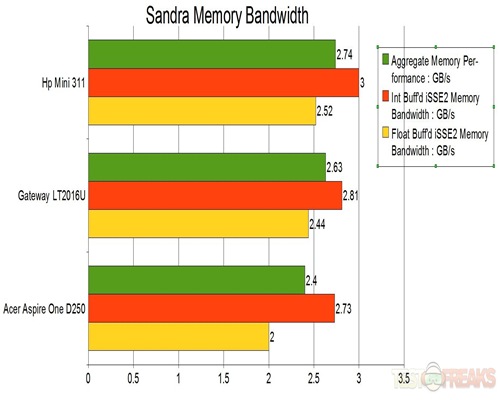
>We’ve got similar scores between the HP mini and the Gateway, with the Aspire one falling a bit behind overall.
and next is the Memory Latency Test:
Benchmark the latency (response time) of processors’ caches and memory
The latency of caches is measured in processor clocks (i.e. how many clocks it takes for the data to be ready) as it is dependent on the processor clock speed.
The latency of memory is measured in nanoseconds as it is typically independent on processor clock speed.
Results Interpretation:
Latency: Lower is better
Speed Factor: Lower is better
This chart might seem a bit deceptive, it’s actually lower equals better, so for this test we actually have the Gateway LT coming out in first place and the HP mini coming in last…
I already ran a couple tests early in this review of the speeds of the network/internet, but Sandra does have a couple built-in as well, so why not use them.
Internet Connection
Benchmark the bandwidth and latency of the Internet connection of your computer
The test attempts to measure the bandwidth and latency of the connection to your ISP’s gateway computer; this should be the maximum transfer rate of the link (i.e. between your computer and ISP gateway).
Data Bandwidth :
Results Interpretation : Higher index values are better.
Data Latency
Results Interpretation : Lower index values are better.
Apparently the HP Mini has a better wireless chipset in it…
The last test I have is the Wireless Test.
Wireless (WLAN/WWAN)
Benchmark the wireless bandwidth of your computer.
The test uses the ICMP (ping/echo) interface to measure the response time and transfer bandwidth to an access point.
Data Bandwidth :
Results Interpretation : Higher index values are better.
Data Latency :
Results Interpretation : Lower index values are better.
Here we see the Acer performs much better with the Gateway LT coming in a close second while the HP mini 311 lags fairly far behind overall..
I do have one more test for you the x264 HD Benchmark 3.0 from TechArp
Simply put, it is a reproducible measure of fast your machine can encode a short HD-quality video clip into a high quality x264 video file. It’s nice because everyone running it will use the same video clip and software. The video encoder (x264.exe) reports a fairly accurate internal benchmark (in frames per second) for each pass of the video encode and it also uses multi-core processors very efficiently. All these factors make this an ideal benchmark to compare different processors and systems to each other.
so here’s the results:
HP Mini 311:
Results for x264.exe r1342
————————–
encoded 1442 frames, 6.48 fps, 3899.26 kb/s
encoded 1442 frames, 6.53 fps, 3899.26 kb/s
encoded 1442 frames, 5.98 fps, 3899.26 kb/s
encoded 1442 frames, 6.39 fps, 3899.26 kb/s
encoded 1442 frames, 1.53 fps, 3970.98 kb/s
encoded 1442 frames, 1.50 fps, 3970.69 kb/s
encoded 1442 frames, 1.53 fps, 3971.67 kb/s
encoded 1442 frames, 1.53 fps, 3971.30 kb/s
and here are the results for the Acer Aspire One D250:
Results for x264.exe r1342
————————–
encoded 1442 frames, 6.84 fps, 3899.26 kb/s
encoded 1442 frames, 6.85 fps, 3899.26 kb/s
encoded 1442 frames, 6.84 fps, 3899.26 kb/s
encoded 1442 frames, 6.78 fps, 3899.26 kb/s
encoded 1442 frames, 1.53 fps, 3971.06 kb/s
encoded 1442 frames, 1.54 fps, 3970.62 kb/s
encoded 1442 frames, 1.53 fps, 3971.81 kb/s
encoded 1442 frames, 1.53 fps, 3971.28 kb/s
results for the Gateway LT:
Results for x264.exe r1342
————————–
encoded 1442 frames, 7.00 fps, 3899.26 kb/s
encoded 1442 frames, 6.97 fps, 3899.26 kb/s
encoded 1442 frames, 6.99 fps, 3899.26 kb/s
encoded 1442 frames, 6.97 fps, 3899.26 kb/s
encoded 1442 frames, 1.58 fps, 3971.00 kb/s
encoded 1442 frames, 1.58 fps, 3971.39 kb/s
encoded 1442 frames, 1.59 fps, 3971.57 kb/s
encoded 1442 frames, 1.58 fps, 3971.93 kb/s
I also ran it on my Corei5 750 computer:
Results for x264.exe r1342
————————–
encoded 1442 frames, 63.64 fps, 3901.21 kb/s
encoded 1442 frames, 64.67 fps, 3900.68 kb/s
encoded 1442 frames, 64.07 fps, 3901.21 kb/s
encoded 1442 frames, 63.98 fps, 3900.68 kb/s
encoded 1442 frames, 19.67 fps, 3971.81 kb/s
encoded 1442 frames, 19.76 fps, 3971.25 kb/s
encoded 1442 frames, 19.61 fps, 3972.15 kb/s
encoded 1442 frames, 19.53 fps, 3970.28 kb/s
The Gateway actually seems to perform a bit better overall than the Hp Mini or the Acer, but still I don’t think I’d be doing much video encoding on any of them honestly..
Conclusion:
The Gateway LT 2016u from Verizon Wireless is not a bad little netbook, it’s like most others out there so don’t expect anything really different from it.
The main reason to get this netbook of course is for the built in access to the Verizon network, and that it does well, but your connection speeds will vary on many factors.
Pros:
+Small and lightweight
+Decent performance
+Simple, easy to use
+Decent battery life
+Nice keyboard
Cons:
-Wireless/Verizon network is rather slow for me
-Small touchpad
-Trial software installed and other junk
-Large battery
| Grades: | |
| Overall |  |
| Design |  |
| Performance |  |
This product was given to technogog for review by the company for review purposes only, and is not considered by us as payment for the review, we do not, and never will, accept payment from companies to review their products. To learn more about our review policy please visit this page HERE.

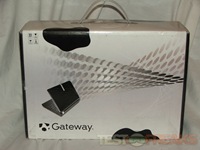
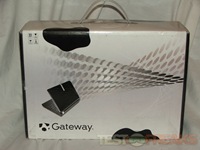
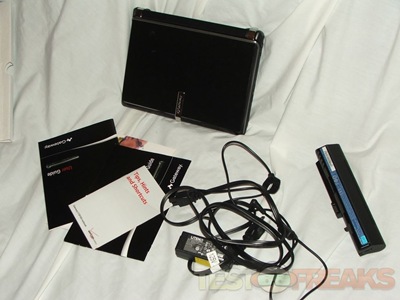
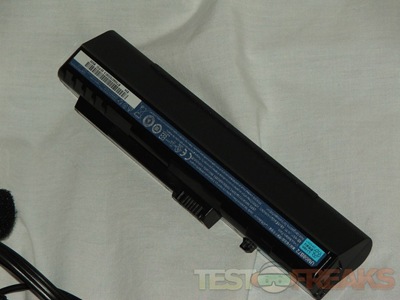

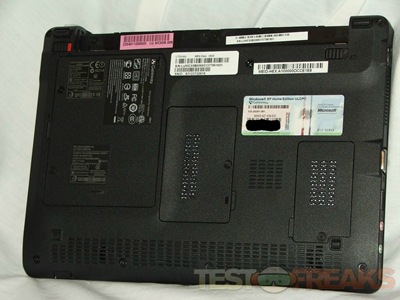
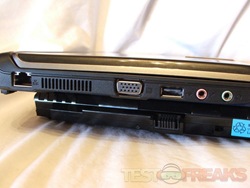
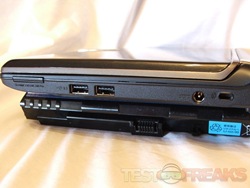
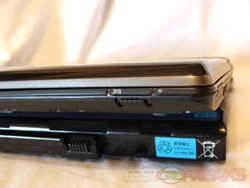
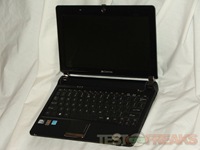
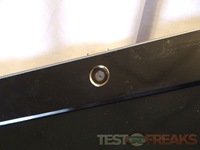
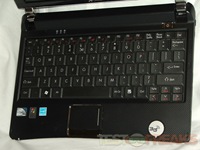
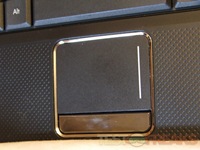
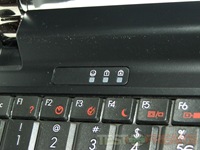
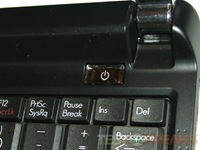
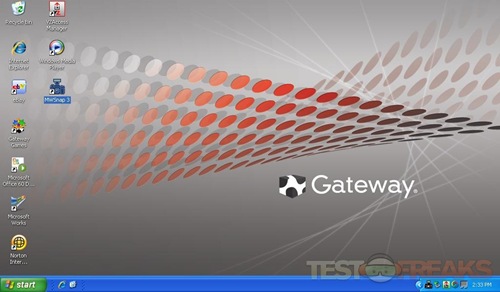
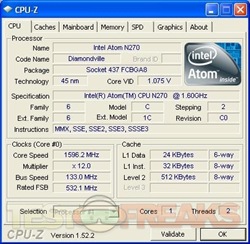
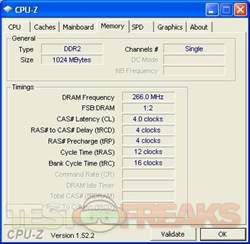
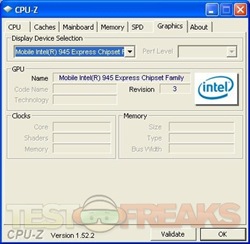
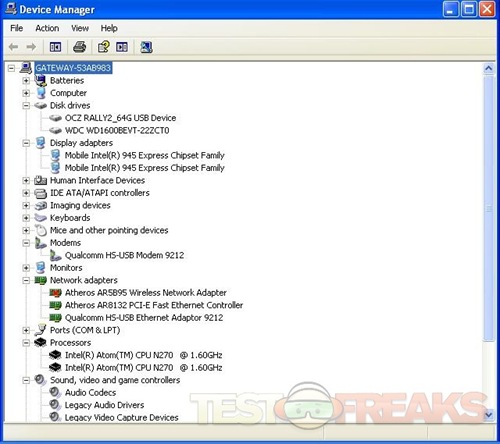
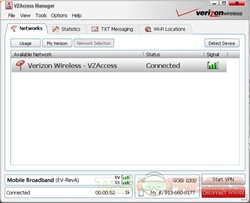
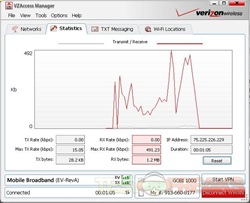
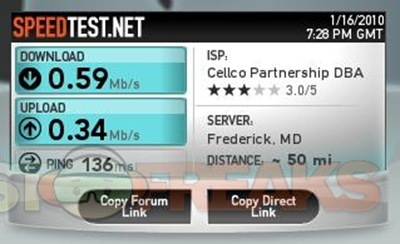

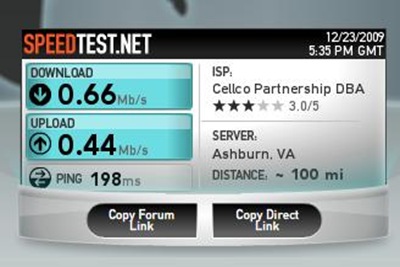

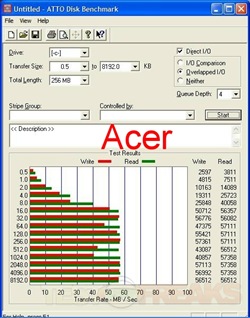
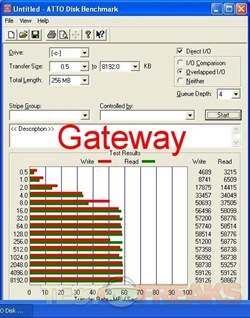
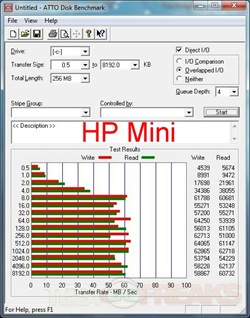
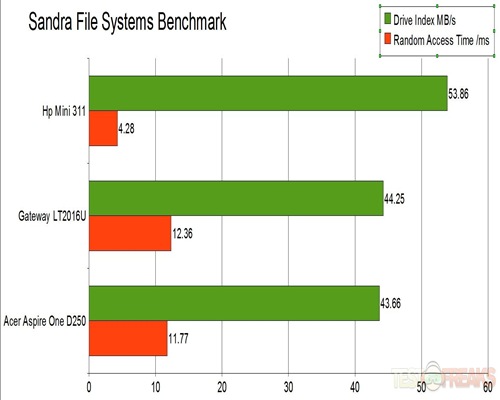
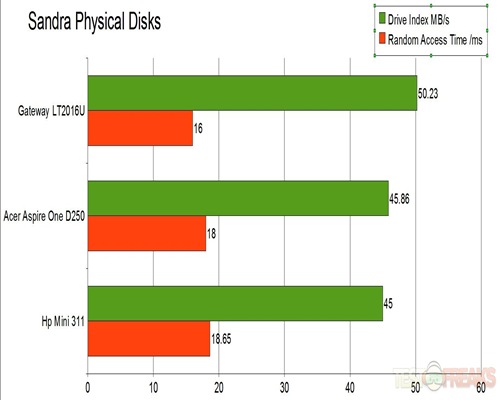
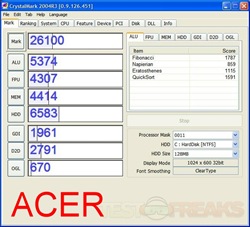
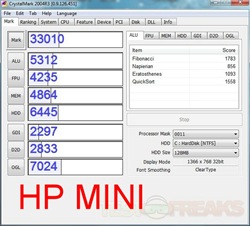
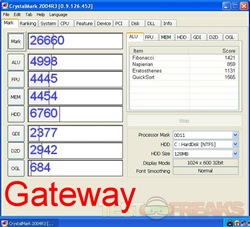
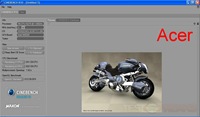
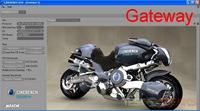
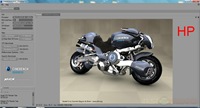
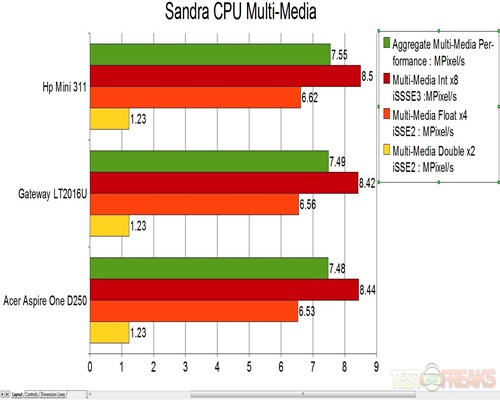
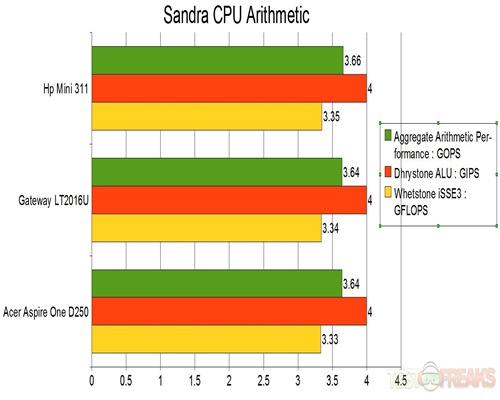
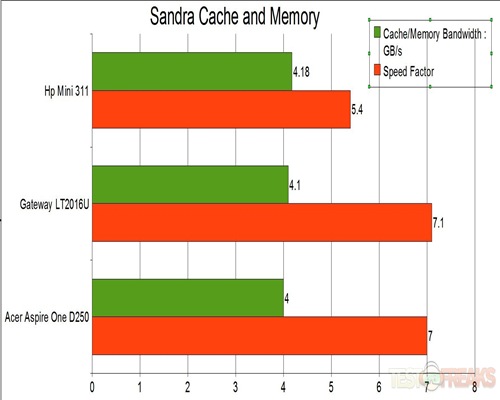
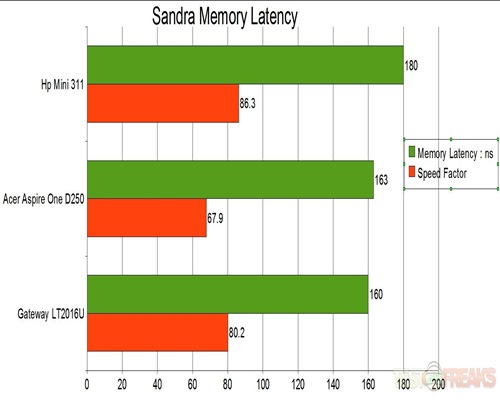
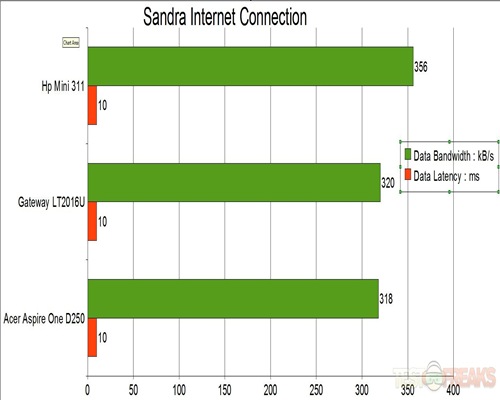
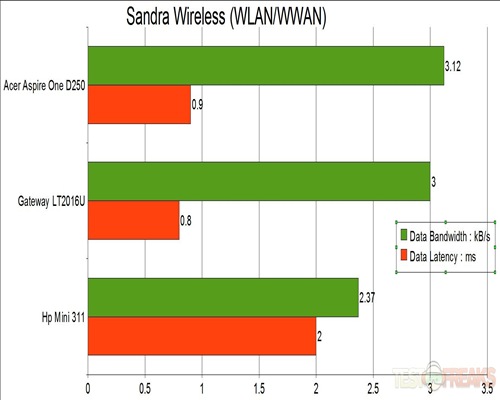





19 comments for “Verizon Wireless Gateway LT 2016u Netbook”